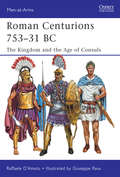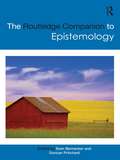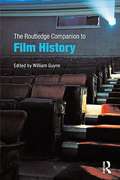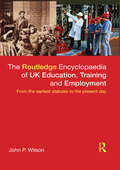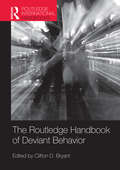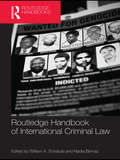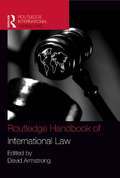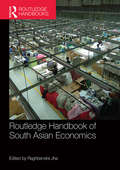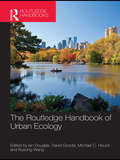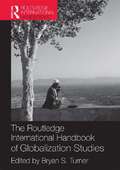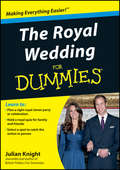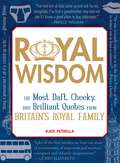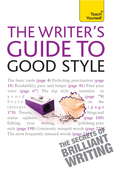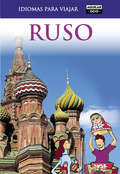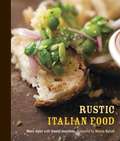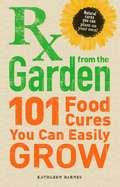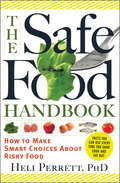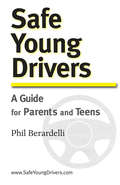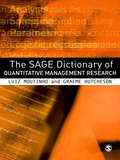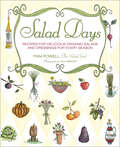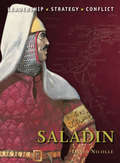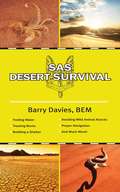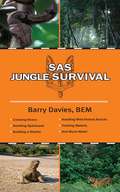- Table View
- List View
Roman Centurions 753-31 BC
by Raffaele D'AmatoA detailed glimpse into the weapons, equipment and uniforms worn by Roman Centurions from the Roman Kingdom right through to the height of the Republic. Including new research, photographs of artefacts and the signature Men-at-Arms artwork, this is an essential addition to the series and includes several artwork reconstructions of actual named individuals and two lavish scenes depicting combat between Centurions and a Triumphal procession.
The Routledge Companion to Epistemology (Routledge Philosophy Companions)
by Duncan Pritchard Sven BerneckerEpistemology, the philosophy of knowledge, is at the core of many of the central debates and issues in philosophy, interrogating the notions of truth, objectivity, trust, belief and perception. The Routledge Companion to Epistemology provides a comprehensive and the up-to-date survey of epistemology, charting its history, providing a thorough account of its key thinkers and movements, and addressing enduring questions and contemporary research in the field. Organized thematically, the Companion is divided into ten sections: Foundational Issues, The Analysis of Knowledge, The Structure of Knowledge, Kinds of Knowledge, Skepticism, Responses to Skepticism, Knowledge and Knowledge Attributions, Formal Epistemology, The History of Epistemology, and Metaepistemological Issues. Seventy-eight chapters, each between 5000 and 7000 words and written by the world’s leading epistemologists, provide students with an outstanding and accessible guide to the field. Designed to fit the most comprehensive syllabus in the discipline, this text will be an indispensible resource for anyone interested in this central area of philosophy. The Routledge Companion to Epistemology is essential reading for students of philosophy.
The Routledge Companion to Film History
by William GuynnThe Routledge Companion to Film History is an indispensible guide for anyone studying film history for the first time. Incorporating a series of 11 introductory, critical essays on key subject areas, with a dictionary of key names and terms, it serves to introduce the reader to the field of film history in a comprehensive and well-rounded manner.
The Routledge Encyclopaedia of UK Education, Training and Employment: From the earliest statutes to the present day
by John P. WilsonA comprehensive guide to all the main labour market initiatives and agencies combining education and employment in the UK, this encyclopaedia presents an historical progression from the Guilds and Statute of Artifices in 1563 through to present day initiatives and changes. Fully cross-referenced throughout, with a full list of acronyms, bibliographic and internet resources, the encyclopaedia includes: Detailed descriptions of all major government initiatives connecting education, training and employment Documentation covering England, Northern Ireland, Scotland and Wales, and initiatives in Ireland up to Irish independence A brief history of education and employment in the UK Chronological history of Government Departments Outlines of all major public agencies and qualifications An extensive glossary of acronyms Information on rarely recorded and inaccessible historical documents With over 1500 entries, this encyclopaedia crosses knowledge boundaries providing for the first time an integrated map of national human capital development. It addresses: preschool initiatives, primary, secondary, further and higher education; vocational education and training; labour market interventions including those designed to return people to employment; and, government strategies designed to enhance economic and technological competitiveness. The cross-referenced structure provides connections to associated items and a chronological tracing of agencies and initiatives. This encyclopaedia will appeal to those involved in all aspects of education, training, employment, careers information, advice and guidance; and policy making.
Routledge Handbook of Deviant Behavior (Routledge International Handbooks)
by Clifton D. BryantThe Handbook of Deviant Behavior presents a comprehensive, integrative, and accessible overview of the contemporary body of knowledge in the field of social deviance in the twenty-first century. This book addresses the full range of scholarly concerns within this area – including theoretical, methodological, and substantive issues – in over seventy original entries, written by an international mix of recognized scholars. Each of these essays provides insight not only into the historical and sociological evolution of the topic addressed, but also highlights associated notable thinkers, research findings, and key published works for further reference. As a whole, this Handbook undertakes an in depth evaluation of the contemporary state of knowledge within the area of social deviance, and beyond this considers future directions and concerns that will engage scholars in the decades ahead. The inclusion of comparative and cross-cultural examples and discussions, relevant case studies and other pedagogical features make this book an invaluable learning tool for undergraduate and post graduate students in disciplines such as criminology, mental health studies, criminal theory, and contemporary sociology.
Routledge Handbook of International Criminal Law
by William A. SchabasInternational criminal law has developed extraordinarily quickly over the last decade, with the creation of ad hoc tribunals in the former Yugoslavia and Rwanda, and the establishment of a permanent International Criminal Court. This book provides a timely and comprehensive survey of emerging and existing areas of international criminal law. The Handbook features new, specially commissioned papers by a range of international and leading experts in the field. It contains reflections on the theoretical aspects and contemporary debates in international criminal law. The book is split into four parts for ease of reference: The Historical and Institutional Framework – Sets international criminal law firmly in context with individual chapters on the important developments and key institutions which have been established. The Crimes – Identifies and analyses international crimes, including a chapter on aggression. The Practice of International Tribunals – Focuses on topics relating to the practice and procedure of international criminal law. Key Issues in International Criminal Law – Goes on to explore issues of importance such as universal jurisdiction, amnesties and international criminal law and human rights. Providing easy access to up-to-date and authoritative articles covering all key aspects of international criminal law, this book is an essential reference work for students, scholars and practitioners working in the field.
Routledge Handbook of International Law (Routledge International Handbooks)
by David ArmstrongThe Routledge Handbook of International Law provides a definitive global survey of the interaction of international politics and international law. Each chapter is written by a leading expert and provides a state of the art overview of the most significant areas within the field. This highly topical collection of specially commissioned papers from both established authorities and rising stars is split into four key sections: The Nature of International Law including the interaction between the disciplines of International Law and International Relations The Evolution of International Law progressing from the ancient world to present day. Law and Power in International Society discussing topical issues such as the war in Iraq and the international criminal court Key Issues in International Law including international refugee law, indigenous rights, intellectual property, trade and the challenges presented by "new terrorism". A comprehensive survey of the state of the discipline, The Routledge Handbook of International Law is an essential work of reference for scholars and practitioners of international Law.
Routledge Handbook of South Asian Economics
by Raghbendra JhaThe Routledge Handbook of South Asian Economics addresses the recent economic transformation in South Asia. Leading experts in the field look at the major economic achievements and challenges for the region and examine why economic development across the South Asia region has diverged so significantly since the early 1990s. Providing a cutting-edge review of the economies of South Asia, the Handbook analyzes key growth areas as well as key structural weaknesses and policy challenges facing these economies. Furthermore, it anticipates trends and suggests corrective measures for the South Asian economic region. Sections focus on issues of human development, such as inequality, poverty and quality of schooling, and monetary and fiscal issues, particularly in light of the ongoing global financial crisis. Further sections discuss issues relating to employment and infrastructure, and on the experience of the region with international trade and financial flows, and environmental challenges. Written by renowned and respected experts on South Asian economics, this Handbook will be an invaluable reference work for students and academics as well as policy makers interested in South Asian Studies, Economics and Development Studies.
The Routledge Handbook of Urban Ecology
by Ian DouglasThe birds, animals, insects, trees and plants encountered by the majority of the world’s people are those that survive in, adapt to, or are introduced to, urban areas. Some of these organisms give great pleasure; others invade, colonise and occupy neglected and hidden areas such as derelict land and sewers. Urban areas have a high biodiversity and nature within cities provides many ecosystem services including cooling the urban area, reducing urban flood risk, filtering pollutants, supplying food, and providing accessible recreation. Yet, protecting urban nature faces competition from other urban land uses. The Handbook of Urban Ecology analyses this biodiversity and complexity and provides the science to guide policy and management to make cities more attractive, more enjoyable, and better for our own health and that of the planet. This Handbook contains 50 interdisciplinary contributions from leading academics and practitioners from across the world to provide an in-depth coverage of the main elements of practical urban ecology. It is divided into six parts, dealing with the philosophies, concepts and history of urban ecology; followed by consideration of the biophysical character of the urban environment and the diverse habitats found within it. It then examines human relationships with urban nature, the health, economic and environmental benefits of urban ecology before discussing the methods used in urban ecology and ways of putting the science into practice. The Handbook offers a state-of the art guide to the science, practice and value of urban ecology. The engaging contributions provide students and practitioners with the wealth of interdisciplinary information needed to manage the biota and green landscapes in urban areas.
The Routledge International Handbook of Globalization Studies: Second Edition (Routledge International Handbooks)
by Bryan S. TurnerThe Routledge International Handbook of Globalization Studies offers students clear and informed chapters on the history of globalization and key theories that have considered the causes and consequences of the globalization process. There are substantive sections looking at demographic, economic, technological, social and cultural changes in globalization. The handbook examines many negative aspects – new wars, slavery, illegal migration, pollution and inequality – but concludes with an examination of responses to these problems through human rights organizations, international labour law and the growth of cosmopolitanism. There is a strong emphasis on interdisciplinary approaches with essays covering sociology, demography, economics, politics, anthropology and history. The Handbook, written in a clear and direct style, will appeal to a wide audience. The extensive references and sources will direct students to areas of further study.
The Royal Wedding For Dummies
by Julian KnightThe fun, slightly irreverent guide to enjoying, understanding, and joining the festivities.Content includes:A brief biography of the happy couple - of courseRoyal wedding fact sheets featuring in-depth explanations of the customs, rules of etiquette, and history on display during the eventsAn inside look at Westminster Abbey - the building, the history, and the weddingsA lively account of royal weddings of the past - with a score card ranking the ultimate results - including a look at other royal/commoner romances"Where did they go?" Royal honeymoons of the pastA "Know Your Heads of State and Hangers-On" section perfect for figuring out who's at the eventsA guide to planning and holding a street party that will bring back memories from the pastA recipe section with great takes on traditional British fare perfect for a partyRoyal trivia sure to tax the talents of young and old alikeAn "If you're going" guide featuringThe best places to get a glimpse of the revelry in personGreat places to grab a pint or glass of wine and soak in the atmosphereTips on getting around London easily and safely on the big day
Royal Wisdom: The Most Daft, Cheeky, and Brilliant Quotes from Britain's Royal Family
by Kate PetrellaThey may be royalty, but the first family of Great Britain has made more than their share of gaffes, faux pas, and verbal blunders. In this book, the quips that tabloids kill for are finally collected in one volume. Whether they're covering up a scandal or smoothing a political mishap, you'll find all of their royal wit and witticism--both the good and the bad--in this cunning collection.
Royal Wisdom
by Kate PetrellaWit, Wisdom, and Wackiness from the Royal family of Windsor! They may be royalty, but the first family of Great Britain has made more than their share of gaffes, faux pas, and verbal blunders. In Royal Wisdom, the quips that tabloids kill for are finally collected in one volume. Whether they're covering up a scandal or smoothing a political mishap, you'll find all of their royal wit and witticism--both the good and the bad--in this cunning collection.
The Rules of Good Style: Teach Yourself
by Katherine LapworthDo you want to write more effectively, correctly and in a manner which is appropriate for this brave new world of text speak and blogging?Whether you are a professional writer, or writing for your profession, a journalist, non-fiction writer, or simply a would-be blogger, you will find essential guidance and the latest style rules in this book.It contains firstly a detailed breakdown of both the rules of grammar, punctuation and spelling and, secondly, a guide to making your work readable, structured and well-paced. Unlike any other style guide, it also sets out the new and evolving rules for 21st century writing such as blogging, chatrooms, and even PowerPoint presentations.
Ruso (Idiomas para viajar #Volumen)
by El País-AguilarIdiomas para viajar ofrece ahora unos contenidos mucho más amplios y completos. Cada guía recoge todo lo que se necesita para desenvolverse durante el viaje: una guía de pronunciación, un resumen gramatical y un manual básico del idioma como introducción a todos los bloques temáticos pensados para resolver situaciones según avanza el viaje (llegada, desplazamientos, alojamiento, restaurantes, ocio, compras, salud, emergencias#). Un código de colores distingue los diferentes bloques temáticos para facilitar la consulta. Todos los capítulos tienen, además de introducciones prácticas del país, un vocabulario imprescindible y expresiones habituales, con sus correspondientes transcripciones. La guía concluye con un nuevo diccionario bilingüe, que contiene todas las palabras de uso habitual en la comunicación diaria.
Rustic Italian Food: [A Cookbook]
by Mario Batali David Joachim Marc VetriSlow-cooked meats, homemade breads, flavorful pastas...these are the traditional comfort-food classics that Italians have been roasting, baking, curing, and making in their own kitchens for generations--dishes that people actually want to cook and eat. In Rustic Italian Food, acclaimed Philadelphia chef Marc Vetri celebrates the handcrafted cuisine of Italy, advocating a hands-on, back-to-the-basics approach to cooking. Home cooks of every skill level will revel in the 120 recipes, such as sweet Fig and Chestnut Bread, rich Spinach and Ricotta Gnocchi, savory Slow-Roasted Lamb Shoulder, and fragrant Apple Fritters. Rustic Italian Food is also an education in kitchen fundamentals, with detailed, step-by-step instructions for making terrines, dry-cured salami, and cooked sausage; a thorough guide to bread and pasta making; and a primer on classic Italian preserves and sauces. Much more than just a collection of recipes, in this book Marc Vetri connects us directly to the essence of Italian food.
Rx from the Garden: 101 Food Cures You Can Easily Grow
by Kathleen BarnesYour backyard becomes an all-natural pharmacy!Colds. Headaches. Upset stomach, Allergy symptoms. Depression. Circulation problems.This timely book goes beyond using herbs as medicine; it also focuses on beneficial foods for more than 100 common ailments and shows you how to grow them.In that way, RX from the Garden lets you circumvent expensive meds with questionable side effects by explaining what foods to eat to help you feel better. In addition to aligning health problems with natural cures, this valuable resource provides step-by-step instruction on how to easily cultivate the corresponding vegetables and herbs in your lawn, garden, or flowerbed.According to Hippocrates, "Our food should be our medicine. Our medicine should be our food." Now you can reap health benefits for your very own backyard bounty.
The Safe Food Handbook: How to Make Smart Choices About Risky Food
by Heli PerrettA helpful, easy reference on food safety from a microbiologist and public health expert. The Safe Food Handbook is an essential guide for everyone, especially those most vulnerable to unsafe food: pregnant women, older adults, young children, those with serious health conditions, and anyone who cooks for them. Dr. Heli Perrett provides clear guidance on how to: Recognize the riskiest foods and places to eatProtect yourself from dangerous microbes like E. coli and salmonellaReduce toxins that build up in your bodyLearn which corners you can cut—and which you shouldn’tEnjoy your favorite foods without hurting your health or your budget Organized by food group, The Safe Food Handbook demystifies the perils in our food—infectious bacteria, deadly molds, hormones, antibiotics, toxins, irradiation, and even wax on produce. It explains what to watch for in fruits and vegetables; fish and shellfish; meat and poultry; dairy; eggs; grains, legumes and nuts; and even herbs and spices. Also included are answers to questions on shopping (“What exactly does this label mean?”), eating out (“What should I avoid in restaurants?”), and food preparation and storage (“How long can I save these leftovers?”)—so instead of worrying, you can relax and enjoy some good, healthy food. “Perrett writes in a manner that clears the fog of claims surrounding food risks and safety.” —Library Journal “She answers many frequently asked questions about prepackaged food, organic products, and what precautions to take with dishes such as sushi and raw beef. She even answers questions readers may not think to ask such as how to avoid distasteful, contaminated spices.” —Ruth Winter, MS, author of A Consumer’s Dictionary of Food Additives
Safe Young Drivers: A Guide for Parents and Teens
by Phil BerardelliTeenagers are by far the most dangerous age group on the road: a 16-year-old is 12 times as likely as older drivers to die in a crash as a single occupant; put two young teens in a vehicle, and the odds of death and injury nearly double. Safe Young Drivers helps to address this enormous problem. It is an indispensable guide for teaching teens to drive. Intended for parents and teens to use together, it addresses parental issues such as how to choose a car for your teen, and provides teens with simple instruction and important tips to remember. With simple graphics, a complete index, and a section called Some ABCs for the Road, Safe Young Drivers is a valuable tool for all new drivers and their teachers.
The SAGE Dictionary of Quantitative Management Research
by Luiz A. Moutinho Graeme D. HutchesonA must-have reference resource for quantitative management researchers, the Dictionary contains over 100 entries covering the fundamentals of quantitative methodologies; covering both analysis and implementation and examples of use, as well as detailed graphics to aid understanding. Every entry features: -An introduction to the topic, -Key relevant features, -A worked example, -A concise summary and a selection of further reading suggestions -Cross-references to associated concepts within the dictionary
Salad Days: Recipes for Delicious Organic Salads and Dressings for Every Season
by Pam PowellFrom the creator of Salad Girl Organic Salad Dressings, a collection of recipes for creating salads and dressings using organic, locally grown ingredients.Savor fresh, artisan salads throughout the year with Pam Powell, creator of delicious Salad Girl Organic Salad Dressings. With a focus on organic greens, cheeses, nuts, and fruits from local sources, these creative salads not only burst with flavor, they are good for you. Recipes include Pea Sprout and Strawberry Salad with Strawberry Rhubarb Vinaigrette; Fresh Fig and Mesclun Salad with Sweet Honey Vinaigrette; Kale, Sausage, and Warm Potato Salad with Maple and Hickory-Smoked Bacon Dressing; Moroccan Couscous and Chicken Salad with Curried Orange and Fig Vinaigrette and many more. Sixty color photos, colorful illustrations, a salad basics chapter, and a resource guide complete this fantastic collection of salad and dressing recipes.
Saladin
by Peter Dennis David NicolleThis Osprey Command book looks closely at the early life, military experiences and key battlefield exploits of Al-Malik al-Nasir Yusuf Ibn Najm al-Din Ayyub Ibn Shahdi Abu'l-Muzaffar Salah al-Din - or Saladin as he is more commonly known outside the Islamic world - who is broadly regarded as the greatest hero of the Crusades, even in Europe. Most chroniclers present him as a man of outstanding virtue, courage and political skill. More recently, however, efforts have been made to portray Saladin as an ambitious, ruthless and even devious politician, and as a less brilliant commander than it normally thought. This book sets out to reveal that the truth is, as usual, somewhere in between.From the Trade Paperback edition.
Samuel Johnson: Selected Writings: A Tercentenary Celebration
by Samuel JohnsonThanks to Boswell’s monumental biography of Samuel Johnson, we remember Dr. Johnson today as a great wit and conversationalist, the rationalist epitome and the sage of the Enlightenment. He is more often quoted than read, his name invoked in party conversation on such diverse topics as marriage, sleep, deceit, mental concentration, and patriotism, to generally humorous effect. But in Johnson’s own day, he was best known as an essayist, critic, and lexicographer: a gifted writer possessed of great force of mind and wisdom. Writing a century after Johnson, Ruskin wrote of Johnson’s essays: He “taught me to measure life, and distrust fortune…he saved me forever from false thoughts and futile speculations.” Peter Martin here presents “the heart of Johnson,” a selection of some of Johnson’s best moral and critical essays. At the center of this collection are the periodical essays from the Rambler, Adventurer, and Idler. Also included are Johnson’s great moral fable, Rasselas; the Prefaces to the Dictionary and his edition of Shakespeare; and selections from Lives of the Poets. Together, these works—allied in their literary, social, and moral concerns—are the ones that continue to speak urgently to readers today.
SAS Desert Survival (Sas Essential Survival Guides Ser.)
by Barry DaviesAnyone venturing into the desert, either by crossing on foot, vehicle, or in an aircraft (other than a commercial flight) should be prepared. Desert regions are those least likely to have an easily available source of water. <P><P>Nevertheless, the survivor must find a water supply or they will die. No matter how abundant the rest of your survival resources are, without water your time is limited.To travel or stay put is one of the great dilemmas any survivor must face. The factors governing any decision should be based on where you are, your chances of survival if you stay put, where you intend moving to and the related hazards in getting there. Without communications it is difficult to assess whether there will be a rescue attempt, and even if there is, it would be presumptive to believe that they will locate you. Additionally, having the physical and mental ability, plus the resources to travel and reach a given point accurately is also a major factor.The SAS Guide to Desert Survival prepares the traveler for any situation they may find themselves in while venturing across desert and arid areas. It will explain the need for an immediate plan, as time will be against you, as well as how to dress for the ultimate protection from the sun and the cold (yes, deserts get very cold at night). The book will show you how and when to travel, as well as how to navigate a route to safety. The desert has two main advantages: the sun and the general clearness of visibility; a simple heliograph will flash a signal to both ground and air rescue services up to twenty-five miles away.
SAS Jungle Survival
by Barry DaviesWhen we think of jungles, we often think of a densely forested area with thick foliage; this is what is known as a primary jungle. But jungles can also include swamps, grasslands, and cultivated areas. <P><P> Primary jungles can fall into the category of either a tropical rain forest or a deciduous forest, depending on the types of trees and plants found growing there. A tropical rain forest is typified by having tall trees whose upper branches interlock to form canopies. Yet of all the environments in which man has to survive, the jungle offers the best chance.The SAS have operated in the jungle for years, sometimes staying in the forest for months at a time. They developed a technique whereby they had two sets of clothing, one for daytime use and one for night. Just before they went to sleep they would change from their wet clothing, which was normally hung under the shelter to dry out. In the morning they would change from their dry clothing and put on the wet. It is an uncomfortable change, but one that guaranteed a good night's sleep in dry clothing.The SAS Guide to Jungle Survival will teach the reader to come to terms with the jungle environment, understand it, and work with it as opposed to "fighting it." The jungle forest can provide shelter, food, and water in abundance, and this book will show you how. If the jungle offers any problems, it is with disease and wild animals; The SAS Guide to Jungle Survival will show you how to avoid and resist both and come out alive.
